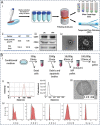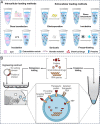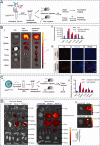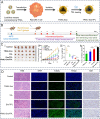Exosome-based delivery strategies for tumor therapy: an update on modification, loading, and clinical application
- PMID: 38281957
- PMCID: PMC10823703
- DOI: 10.1186/s12951-024-02298-7
Exosome-based delivery strategies for tumor therapy: an update on modification, loading, and clinical application
Abstract
Malignancy is a major public health problem and among the leading lethal diseases worldwide. Although the current tumor treatment methods have therapeutic effect to a certain extent, they still have some shortcomings such as poor water solubility, short half-life, local and systemic toxicity. Therefore, how to deliver therapeutic agent so as to realize safe and effective anti-tumor therapy become a problem urgently to be solved in this field. As a medium of information exchange and material transport between cells, exosomes are considered to be a promising drug delivery carrier due to their nano-size, good biocompatibility, natural targeting, and easy modification. In this review, we summarize recent advances in the isolation, identification, drug loading, and modification of exosomes as drug carriers for tumor therapy alongside their application in tumor therapy. Basic knowledge of exosomes, such as their biogenesis, sources, and characterization methods, is also introduced herein. In addition, challenges related to the use of exosomes as drug delivery vehicles are discussed, along with future trends. This review provides a scientific basis for the application of exosome delivery systems in oncological therapy.
Keywords: Drug delivery; Exosome; Isolation; Surface functionalization; Tumor therapy.
© 2024. The Author(s).
Conflict of interest statement
The authors declare that they have no competing interests.
Figures












References
Publication types
MeSH terms
Substances
Grants and funding
LinkOut - more resources
Full Text Sources
Medical
Research Materials

